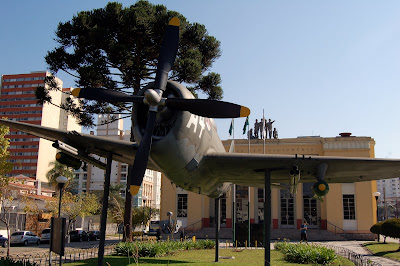
In the west of the observatory, we can see the districts of Cascatinha, Orleans, Santo Inácio and São Braz.
At the end of the last century, Italian immigrants landed on the coast and, a year later, reached the plateau of Curitiba. The region where today is the Cascatinha neighborhood was part of the Santa Felicidade Colony and thus also was occupied by Italian immigrants from the end of the century. The name derives from an accident of geography at the site and a small waterfall (Cascatinha) on a tributary of the Barigui river. Local residents used to visit the region, on which was installed in 1952, the Cascatinha restaurant, considered the oldest still in operation.
The Colony Orleans was created in December 1875, with 65 lots along the highway Mato Grosso (today BR-277). The first Polish immigrants, Prussian and Galician, in greater numbers, were the initial population of 249 people, divided into 63 families. In the area also settled in Italian, French, German and English. The emancipation occurred on November 10th, 1878 and its name was given in honor of Prince Luis Felipe de Orleans, Count D `I, husband of Princess Izabel. In 1880, the colony was visited by Emperor Dom Pedro II.
The neighborhood derives from the Santo Inácio Colony, which was established in 1876 during the administration of then President of the Province Adolpho Lamenha Lins. In its 70 lots, were established Polish immigrants, Silesian and Galician. In 1880, a report from the province stated that the population was 334 inhabitants. The settlers were engaged in cutting wood, taking advantage of the forests of their plots. Eleven years later, the colony dedicated itself to grow potatoes, corn, beans, peas, oats, barley and wheat.
The Sao Braz district received this name due to the great devotion of its residents to this Saint. Its history is intertwined with the history of the Orleans district, for having the same characteristics and their populations, the same rural lifestyle. The cultivation of cereals and production of pigs and cattle were the main activities developed by the families occupying the only four large farms in the region. So it was mid-1970, when the farms began to be divided into plots, changing the character of the agricultural colony to integrate into the urban fabric in expansion.








































